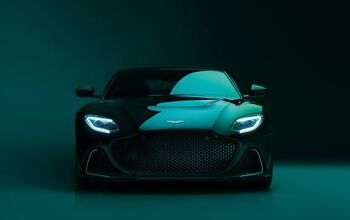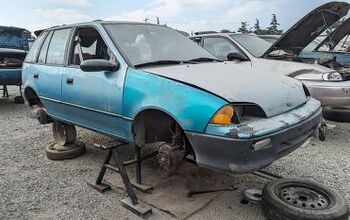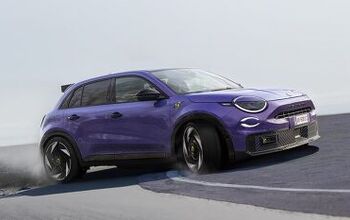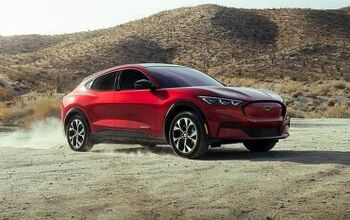95% Of Pickup Truck Buyers Agree With Dan Neil: Toyota Tundra Not The Most Technically Advanced Truck
Pulitzer Prize-winning writer Dan Neil fairly torched the 2016 Toyota Tundra CrewMax in a recent review for The Wall Street Journal’s Rumble Seat.
“It is not the strongest, the swiftest and definitely not the most fuel efficient,” Neil wrote in a particularly stinging paragraph which began by Neil calling the Tundra, “not the most technically advanced truck on the market.”
The Tundra faithful, not particularly numerous at the best of times relative to rival Detroit nameplates, is an ever more compact group of individuals. With each passing month, America’s truck buyers make increasingly clear that they heartily agree with Dan Neil.
“It has a pretty raucous-sounding powertrain,” Neil says of the highfalutin 1794 Edition Tundra, “and delivers fairly squishy driving reflexes compared with its prime competitors.” Those prime competitors own 95 percent of the full-size truck market so far this year, up from 94 percent through the first five months of 2015. Indeed, Tundra market share among full-size pickups was fairly steady at 6 percent after falling from 7 percent in 2009 and 2010 and from 9 percent in 2008 and 2007, when Tundra volume reached record highs.
In other words, a decade ago, nearly one out of every ten pickup trucks sold in the United States was a Toyota Tundra. That figure now stands at one in twenty.
Neil’s right when he explains some of the reasoning behind the Tundra’s scarcity. In contrast to its chief rivals, the Toyota, “has a more limited menu.” But this isn’t new – the Tundra’s lack of variants was equally noteworthy when 9 percent of the full-size pickup trucks sold in America were Tundras.
But Neil’s especially right when he says the Tundra isn’t high-tech. There’s no aluminum-intensive body, no highly efficient diesel or trailer parking, either. Toyota, for so long at the forefront of hybrid technology and lean manufacturing excellence, has allowed the Tundra to grow grey and old. Recent refreshes included a thick treatment of Just For Men, but consumers aren’t fooled: the Tundra is ancient.
The second-generation Toyota Tundra arrived at dealers in 2007. (Note: the 2014-onward Tundra is sometimes called a third-generation model, but c’mon.) The 5.7-liter 4×4 Toyota Tundra rang EPA’s fuel consumption meter at 14 miles per gallon nine years ago. Today? 15 mpg, in a world where F-150 EcoBoost 2.7-liter V6 travels 33-percent farther on a gallon of fuel.
Besides the noted superiority of direct full-size rivals, the truck market’s marginally improved midsize demand is abundantly obvious inside Toyota’s own pickup truck portfolio. Sales of the class-leading Toyota Tacoma rose to a record high of 179,562 units in calendar year 2015, and the Tacoma’s 9-percent year-over-year improvement through 2016’s first five months outpaces the pickup truck sector’s 6-percent uptick. Monthly Tacoma volume has increased in 19 of the last 21 months.
Yet while U.S. pickup truck volume rose 6 percent, or 59,000 units, in the first five months of 2016, Tundra sales are down 11 percent this year, a 5,555-unit drop. Monthly Tundra volume has decreased in nine of the last 10 months, including a five-month streak to begin 2016. In a historic context, the 106,000 Tundras Toyota USA is on track to sell in 2016 represents a 46-percent decrease from 2007, when the Tundra was new.
The Tundra doesn’t go without compliments. “The Tundra 1794 is absolutely chockablock with creature comforts,” Neil says, while also giving credit to Toyota’s Tundra pricing model.
Perhaps the Tundra’s marketplace performance deserves a positive outlook, as well. Here’s a truck that Toyota seemingly forgot to foster — Ford has debuted two new F-150s since the second-generation Tundra was introduced — yet it’s a truck that is set to make 2016 the fifth consecutive year in which more than 100,000 are sold.
Moreover, it could be worse. Toyota sells nine Tundras for every Titan sold by Nissan.
[Image Source: Toyota]
Timothy Cain is the founder of GoodCarBadCar.net, which obsesses over the free and frequent publication of U.S. and Canadian auto sales figures. Follow on Twitter @goodcarbadcar and on Facebook.
More by Timothy Cain
Latest Car Reviews
Read moreLatest Product Reviews
Read moreRecent Comments
- Redapple2 I gave up on Honda. My 09 Accord Vs my 03. The 09s- V 6 had a slight shudder when deactivating cylinders. And the 09 did not have the 03 's electro luminescent gages. And the 09 had the most uncomfortable seats. My brother bought his 3rd and last Honda CRV. Brutal seats after 25 minutes. NOW, We are forever Toyota, Lexus, Subaru people now despite HAVING ACCESS TO gm EMPLOYEE DISCOUNT. Despite having access to the gm employee discount. Man, that is a massive statement. Wow that s bad - Under no circumstances will I have that govna crap.
- Redapple2 Front tag obscured. Rear tag - clear and sharp. Huh?
- Redapple2 I can state what NOT to buy. HK. High theft. Insurance. Unrefined NVH. Rapidly degrading interiors. HK? No way !
- Luke42 Serious answer:Now that I DD an EV, buying an EV to replace my wife’s Honda Civic is in the queue. My wife likes her Honda, she likes Apple CarPlay, and she can’t stand Elon Musk - so Tesla starts the competition with two demerit-points and Honda starts the competition with one merit-point.The Honda Prologue looked like a great candidate until Honda announced that the partnership with GM was a one-off thing and that their future EVs would be designed in-house.Now I’m more inclined toward the Blazer EV, the vehicle on which the Prologue is based. The Blazer EV and the Ultium platform won’t be orphaned by GM any time soon. But then I have to convince my wife she would like it better than her Honda Civic, and that’s a heavy lift because she doesn’t have any reason to be dissatisfied with her current car (I take care of all of the ICE-hassles for her).Since my wife’s Honda Civic is holding up well, since she likes the car, and since I take care of most of the drawbacks of drawbacks of ICE ownership for her, there’s no urgency to replace this vehicle.Honestly, if a paid-off Honda Civic is my wife’s automotive hill to die on, that’s a pretty good place to be - even though I personally have to continue dealing the hassles and expenses of ICE ownership on her behalf.My plan is simply to wait-and-see what Honda does next. Maybe they’ll introduce the perfect EV for her one day, and I’ll just go buy it.
- 2ACL I have a soft spot for high-performance, shark-nosed Lancers (I considered the less-potent Ralliart during the period in which I eventually selected my first TL SH-AWD), but it's can be challenging to find a specimen that doesn't exhibit signs of abuse, and while most of the components are sufficiently universal in their function to service without manufacturer support, the SST isn't one of them. The shops that specialize in it are familiar with the failure as described by the seller and thus might be able to fix this one at a substantial savings to replacement. There's only a handful of them in the nation, however. A salvaged unit is another option, but the usual risks are magnified by similar logistical challenges to trying to save the original.I hope this is a case of the seller overvaluing the Evo market rather than still owing or having put the mods on credit. Because the best offer won't be anywhere near the current listing.



































Comments
Join the conversation
I was truck shopping 3 months ago, drove all 4 of the major brands and got a Tundra crew max. Now my test was of midlevel trucks with the big motors not those loaded with leather and fake wood. Chev, rode nice, steered nice, interior a cave and didnt feel like it would last, motor and tranny sub par. Lease was 4k more than tundra. Dodge, best motor and tranny by far, the rest felt like a 2000 jeep liberty,Lease 4k more than the toyota. Ford, there is a reason why its the No1 seller. Felt and rode like a limo, steered nicely as well, was quiet etc, more like a really mercedes big car than a truck, you wanted to be in it, steered nicely too, lease 5k more than the toyota. Tundra, best real tow rating than the others by far(my main reason for a truck), steerign feel of a 70s cadillac, rode like a truck but tolerable, feels anvil tough, great transmision, its ride and handling drawbacks irelevant on the highways, backseat, two teenagers and their girlfreinds could spend a weekend back there and not rub elbows, lease was 4-5k less than the others, and I negotiated hard everywhere. Of the others I would take the Ford over the toyota even for 2k more. The ford felt nowhere near as durable though, and for me the truck has to actualy be a truck. Lots of people love wranglers and old land cruisers because despite their crudity they are tough and tough feeling, same with the tundra. But yeah for Urban cowboys not on a budget there are better choices.
"In a historic context, the 106,000 Tundras Toyota USA is on track to sell in 2016 represents a 46-percent decrease from 2007, when the Tundra was new." The context is historical, not historic--at least not from Toyota's perspective--though it may prove to be historic if it causes the demise of the Tundra model.